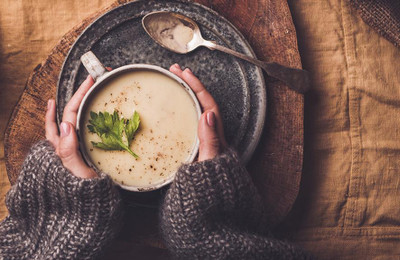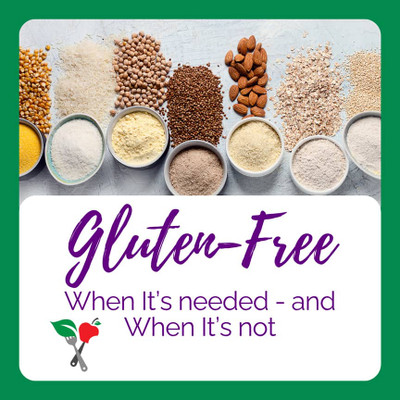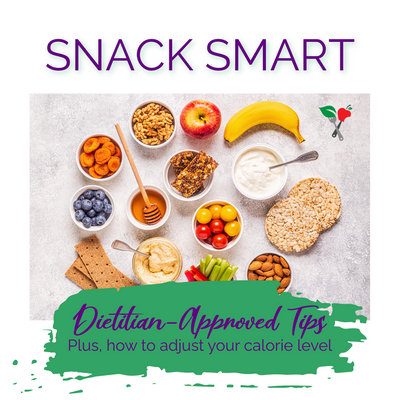Healthy Recipe Swaps for Your Fall Comfort Foods
We’ve officially entered fall, the time when cooler temperatures and changing leaves lead many of us reaching for our cozy sweaters, warm drinks, and favorite comfort foods. What do you think of when you think of cooler weather comfort foods? I think of chili, soups, casserole, warm pies, and the comeback of the crockpot that has been stored away during the hotter months. Many of these foods can be loaded with extra calories, fat, salt, and added sugars. If you are craving these fall comforts but trying to stay on a healthy eating path, working to reverse some unhealthy eating patterns, or are interested in trying some new healthy hacks, we at Seattle Sutton’s Healthy Eating have you covered. Oftentimes, some simple recipe swaps can easily increase the nutrition of a dish by helping to lower unhealthy fats, sodium, and added sugars without sacrificing flavor or adding a bunch of steps to your recipe. Read on for some simple tips and tricks to improve the nutrition all of your favorite fall comfort foods.
Recipe swap #1: Breadcrumbs → Oatmeal
Replacing breadcrumbs with oatmeal is an easy way to get an extra fiber boost from your dishes. Oatmeal is full of soluble fiber which can help to lower cholesterol levels. Studies show that oats may help promote weight loss, lower blood sugar, and reduce your risk of heart disease. Beta-glucan, is a type of soluble fiber that is considered the major active component of oats because of its cholesterol-lowering and antidiabetic effects. If you normally use breadcrumbs in meatloaf or meatballs, you can replace the breadcrumbs with this whole grain in the same amounts called for in the recipe. Oatmeal works best as a replacement in meat-based dishes rather than a topping to a casserole. Oatmeal generally does not crisp up like breadcrumbs would when used as a topping.
Recipe swap #2: Fat-high red meat → Beans or mushrooms
The American Institute for Cancer Research recommends limiting the amount of red meat you consume and adding more beans and plant-based foods. The latest research shows that eating more than 12 to 18 ounces of red meat per week increases the risk of colorectal cancer. Reducing the amount of red meat is also better for heart health and the environment. Swapping out black beans or kidney beans in tacos and burritos, egg dishes, or using white beans in pasta help to decrease fat, saturated fat, and cholesterol and add in fiber, antioxidants, and time-savings.
Mushrooms add a meaty taste and can easily replace meat or be used mixed with ground meat to stretch a pound of ground meat and increase nutrients. Adding half ground meat and half mushrooms can intensify the umami flavors in a dish. Mushrooms are full of antioxidants, B vitamins, and fiber. You might even be able to fool your dinner guests into eating mushrooms without them even noticing! Finely chop mushrooms (or run through a food processor) then sauté with onions for several minutes to develop the meaty flavor and then seamlessly blend into ground meat.
Recipe swap #3: Sour cream and mayonnaise → Plain Greek Yogurt
Sour cream and mayonnaise add a creaminess and a tang to dishes that make them a common ingredient in many people’s comfort food favorites, such as dips, salads, and spreads. Full-fat sour cream and mayonnaise can easily be swapped out with fat-free plain Greek yogurt with ease and little notice. It will also increase the calcium, vitamin D, and protein in your dishes while also cutting back on artery-clogging saturated fats. In salads like chicken, tuna, or egg salad you can swap half or even all of the mayonnaise with plain Greek yogurt. In dips and spreads, you can also do the same. If using yogurt as an ingredient swap for sauces, such as cream soups or stroganoff, adding 2 tablespoons of flour or 1 tablespoon of cornstarch per cup of yogurt before adding to the sauce can help keep the mixture thick. To avoid curdling, yogurt should be added at the last minute and not left to boil.
Recipe swap #4: Butter/Oil → Unsweetened Applesauce or Mashed Banana
In baked goods and desserts, swapping out butter for unsweetened applesauce or a mashed banana is an easy alteration that can give you a lower fat and calorie dish. When using this recipe swap it is important to be sure that you use unsweetened applesauce. The added sugars not only are an unhealthy addition to your dish but they also could add an unwanted sweetness to your dish. Also, do not lengthen the cooking time of any dishes you are trying this swap on, low-fat dishes tend to dry out if overcooked. Many dishes, such as muffins and breads, the butter or oil can be substituted for at least half of the butter or oil called for in the recipe, and sometimes you may be able to swap the entire amount. Brownies, cakes, and other soft-baked items are ideal for this recipe swap. Cookies, biscuits, and other recipes that you would like crispier may not be the best to swap for these items as it may make them mushy and soft. Another tip for success with this swap, work the batter very gently and as little as possible in the final mix before baking.
Recipe swap #5: Potatoes → Cauliflower
Although potatoes are very healthy and do not need to be eliminated from anyone’s diet (check out our blog post “Can I Eat Potatoes?”), certain dishes with potatoes can be high in carbohydrates, fat, and calories. Replacing some or all of your potatoes in a recipe with cauliflower can add some additional nutrients to your dish while decreasing the calories and carbohydrates in your dish (guess what, we wrote a blog about the health benefits of cauliflower too, read it here). Examples would be mashed cauliflower added as a side dish or to top a shepherd’s pie or rice cauliflower used in place of white rice in stir-fries, grain bowls, or casseroles. If you want to add an extra vegetable serving to your dish but keep your potatoes, feel free to add both potatoes and cauliflower. The potatoes will provide fiber, vitamin C and B6 and the cauliflower will lend more vitamin C, antioxidants, and vitamin K. To increase the health benefits even further, leave the skins on your potatoes for extra fiber and nutrients.
Similar to this recipe swap, is adding more vegetables into traditionally veggie-less dishes. In our house we love adding carrots, onions, celery, and parsnips to our sloppy joes; squash to our homemade macaroni and cheese; and spinach, red peppers, and onions to our pasta dishes and homemade pizza. Jazz up those recipes with extra vegetables!
Recipe swap #6: White, refined grains → Whole grains
By now, this recommendation may seem obvious to those who have been trying to eat healthy, as it is a common recommendation and for good reason. Whole grains are rich in vitamins and minerals like magnesium, B vitamins, chromium, iron, and folate. Their fiber content has been linked to weight loss, heart health, and improved blood sugars. When you consume dietary fiber, most of it passes through the intestines and is not digested, this leads to digestive benefits as well. White, refined grains are void of fiber and most nutrients. Because of the lack of fiber in white, refined grains, you miss out on the filling power which could lead to eating more calories. Research has found that when whole grains are swapped for white, refined grains fewer calories are absorbed and you actually burn more calories (about 108 calories more per day according to this study! That’s the same amount you would burn doing 30 minutes of yoga, climbing stairs for 10 minutes, or walk briskly for 20 minutes!) Look for 100% whole grains, this means that the entire grain has not been processed or removed so it will have the highest nutrient content. Choose brown or wild rice, whole-wheat pasta and tortillas, popcorn, and experiment with ancient grains such as barley, freekeh, and amaranth.
Recipe swap #7: Cream → Pureed Beans
Pureed beans can be used in recipes as a low-fat, high-fiber base or thickener in sauces and soups. When purchasing beans look for canned beans with no added salt to eliminate the extra salt often hiding in canned foods. If you have regular canned beans in your cabinet you want to use up, rinse your beans in a colander with fresh water to decrease the sodium by about half. Puree the beans in a blender or food processor and once smooth add to recipes. You can also use this base for a flavorful sandwich spread or hummus. Using beans in place of cream can help to reduce the fat and cholesterol in a dish and increase fiber, resistant starch, and phenolic compounds which will benefit both heart and digestive health. Read more about beans health benefits and other ways to prepare them on our blog here. According to Seattle Sutton’s Healthy Eating’s Chef Marcus, you can use any type of bean, but a light bean tends to be relatively milder and will offer a silky mouthfeel when substituting for cream. When making soup with beans, puree half of the beans and add the other half as whole beans to your soup. As a thickener, use ¼ cup of beans to 1 cup of liquid (either low sodium broth or sauce), blend, and add more beans if necessary to get the desired consistency.
Recipe swap #8: Sugar → Vanilla extract
Decreasing the amount of added sugars we are consuming is on a lot of people’s minds lately. News about how sugar negatively impacts our health seems to keep popping up. The new addition of added sugars on the nutrition labels also leaves many of us second-guessing some of the food items we are regularly eating. In baked goods, it is quite easy to decrease the amount of sugar you add to a dish. I often cut the sugar in recipes by a third of the amount called for in the recipe. Bonus, if you use the swap for butter described earlier, the sweetness from the fruit often makes up for some of the sugar you left out. Using natural fruit in your recipes will harness the sweetness of fruit without adding sugar. Even adding fruit to unsweetened cereal or a bowl of oatmeal is an easy swap for sugar-laden cereals and spoonfuls of brown sugar. Another trick is to cut the amount of sugar in the recipe by ¼ to 1/3 the amount as I mentioned above, then add a teaspoon of vanilla extract. Adding vanilla to foods will add sweetness without the extra sugar. You can also experiment with different extracts such as almond and lemon. Cutting back little by little will give your taste buds time to adjust. I recommend tinkering with your recipes to see what ratios work best for you.
Many healthy eating guidelines urge us all to eat out less and cook more meals at home. Preparing your own meals gives you control over the nutrition content of your food, the food safety handling, and can save you significant money. Cooking at home also helps us to connect with those around us and instill healthy eating principles in our children. Teaching your child or grandchild a recipe that has been passed down in the family connects them with their roots and teaches them about cultural and family customs. Comfort foods can help feed our souls! Certain foods like your grandmother’s apple pie or your father’s famous spaghetti can help remind you of good times with those we love and leave us with happy, soothing feelings. These foods should not be laden with guilt or avoided, but with these simple healthy hacks, you can take those fall comfort foods from nutrient-poor to nutrient-FULL! Many of these tips are tried and true hacks that we use in many of our favorite Seattle Sutton’s dishes. Do you have a favorite healthy eating recipe swap? We’d love to hear them and share with other Seattle Sutton’s followers! Happy Fall y’all!

Interested in eating healthy? Hungry for more?








 Weight Loss
Weight Loss Health & Wellness
Health & Wellness Diabetes
Diabetes Heart Health
Heart Health Motherhood & Family
Motherhood & Family Dietary Restriction
Dietary Restriction Other Health Conditions
Other Health Conditions About SSHE
About SSHE


